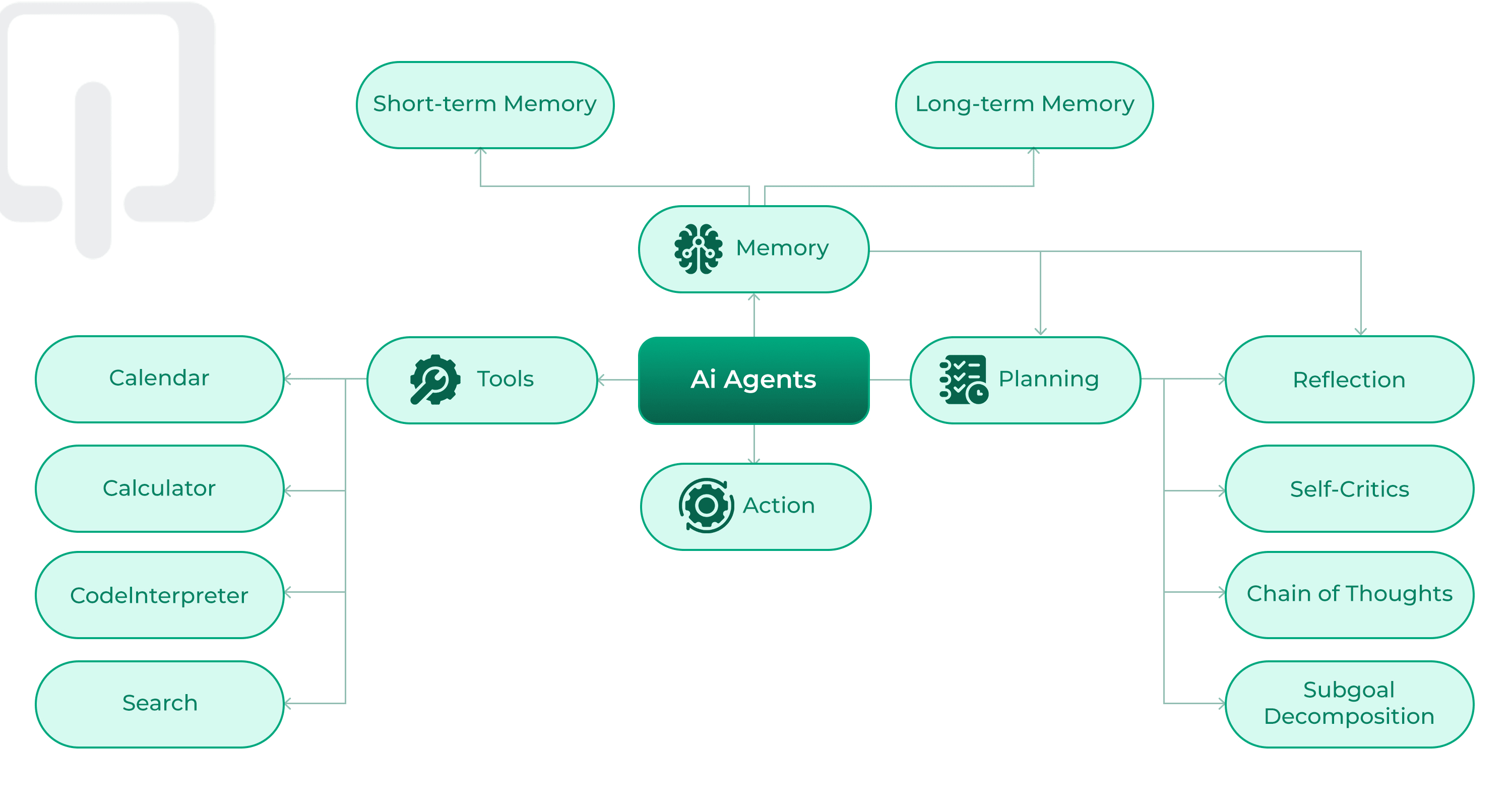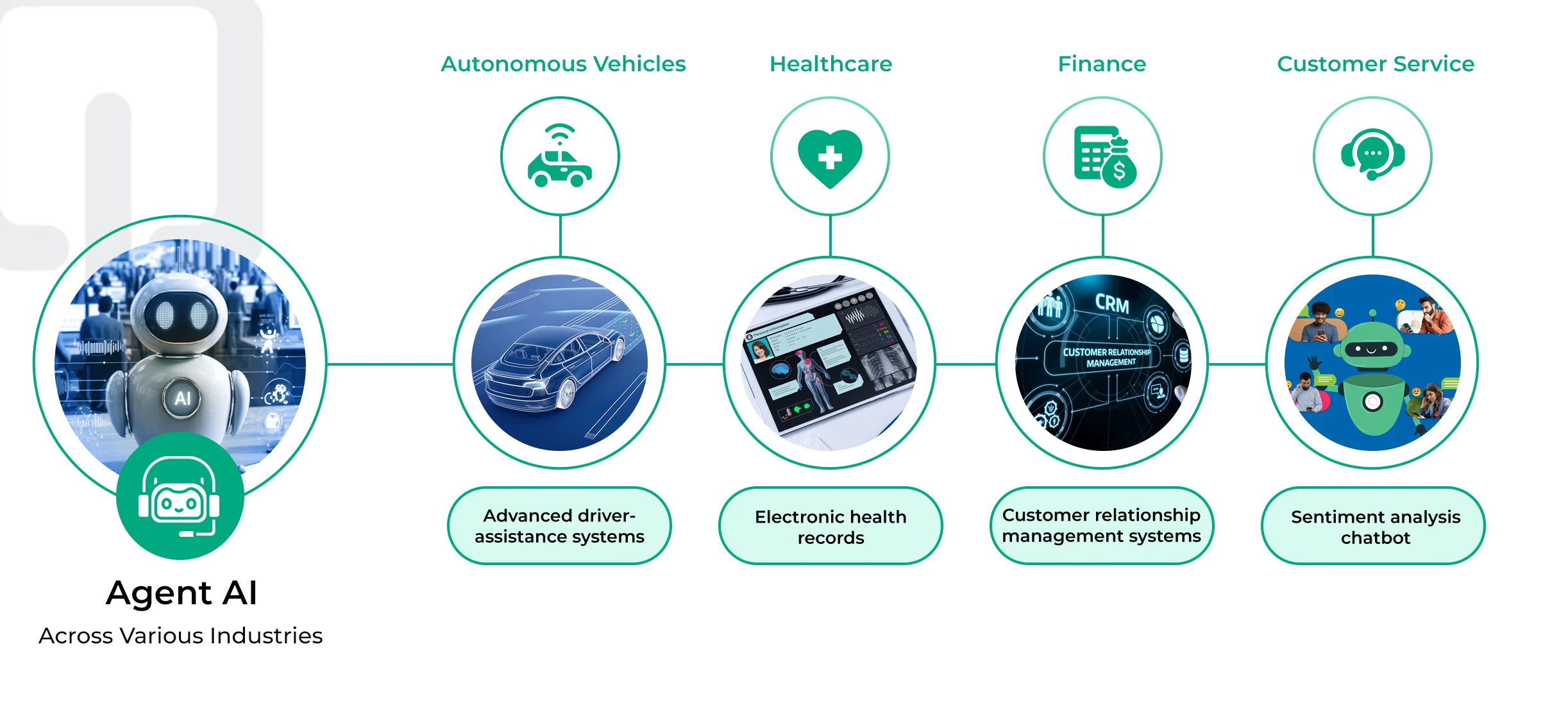November 12, 2025
Lorem ipsum dolor sit amet, consectetur adipiscing elit. Suspendisse varius enim in eros elementum tristique. Duis cursus, mi quis viverra ornare, eros dolor interdum nulla, ut commodo diam libero vitae erat. Aenean faucibus nibh et justo cursus id rutrum lorem imperdiet. Nunc ut sem vitae risus tristique posuere.
The landscape of artificial intelligence is experiencing a transformative shift toward autonomous, goal-driven systems that can operate independently while delivering measurable business value. While traditional artificial intelligence has required constant human oversight and pre-programmed responses, the business world is witnessing a fundamental shift toward truly autonomous intelligence. Agentic AI development represents a revolutionary leap, creating systems that not only respond to commands but also proactively identify problems, develop solutions, and execute complex strategies independently.

What makes this particularly compelling for business leaders is the tangible return on investment. U.S. companies expect an average ROI of almost 2x (192%) from agentic AI, with generative AI already delivering an average return of 152% and 62% of companies experiencing more than 100% returns. Among organizations already implementing AI agents, nearly two-thirds (66%) report increased productivity, while top-performing organizations achieve up to 18% ROI from their efforts, well above typical cost-of-capital thresholds.
The strategic implications are clear: 96% of enterprise IT leaders reported plans to expand their use of AI agents over the next 12 months, and 25% of companies using generative AI will launch agentic AI pilots or proofs of concept in 2025, growing to 50% by 2027.
Today, building agentic AI systems has become the competitive advantage that separates industry leaders from followers.
Agentic AI systems fundamentally differ from conventional AI through their autonomous capabilities. These systems demonstrate independent decision-making, goal-oriented behavior, environmental interaction, and self-correction abilities that enable them to adapt to dynamic business scenarios without constant human intervention.

Unlike traditional automation that follows predetermined rules, building agentic AI systems involves creating agents that can interpret high-level business objectives expressed in natural language and decompose them into actionable strategies. This capability makes them invaluable for handling complex, real-world scenarios where rigid rule-based systems would struggle.
The core advantage lies in their ability to perceive, reason about, and act within complex environments while continuously learning from outcomes and adjusting approaches based on feedback. This creates a foundation for truly autonomous AI systems that can collaborate with humans and other agents to achieve specific organizational objectives.

Successful agentic AI development services require integrating several critical architectural layers that work in harmony to create robust, scalable systems.
The perception layer serves as the system's sensory interface, gathering and interpreting diverse data streams including structured databases, unstructured text, sensor feeds, and visual inputs. This component employs natural language processing, computer vision, and signal processing technologies to filter noise and deliver contextual environmental snapshots that inform decision-making processes.
The cognitive module serves as the system's brain, handling reasoning, planning, and autonomous decision-making through advanced AI models, including large language models, neural networks, and reinforcement learning algorithms. This layer assesses situations, recalls experiences, generates strategic options, and selects optimal actions aligned with system goals.
The orchestration layer coordinates communication between modules and manages multi-agent workflows. It handles task delegation, integrates outputs from specialized agents, and dynamically allocates resources while ensuring scalability and flexibility for adding new capabilities as business needs evolve.
The action module executes decisions through integration points, including APIs, robotic process automation, and direct system actuators. This component includes verification and error-handling routines to ensure actions achieve intended results and maintain system reliability.

Advanced memory architectures enable agents to accumulate knowledge across interactions. Short-term memory handles immediate contexts, long-term memory stores learned patterns and insights, while episodic memory captures successful collaboration patterns between agents.

AI agents development benefits from established design patterns that have proven effective across various enterprise implementations. The reflection pattern enables agents to review their work, identify mistakes, and iterate until producing optimal responses, creating a foundation for continuous improvement and error correction.
The tool use pattern extends capabilities beyond internal knowledge by allowing agents to leverage external tools for gathering information through database queries, code execution, and API invocations. This pattern enables real-world interaction and significantly expands the scope of problems agents can solve independently.
The ReAct (Reason and Act) pattern combines reflection with tool usage, allowing agents to reflect on outputs while interacting with the environment. This creates one of the most powerful frameworks used in modern agentic AI systems, enabling sophisticated problem-solving approaches.
Planning patterns enable agents to create strategic roadmaps by subdividing complex tasks and outlining clear objectives rather than attempting one-shot solutions. This approach significantly improves success rates for complex business processes.
Multi-agent collaboration patterns allow different specialized agents to work together, each contributing unique capabilities while maintaining awareness of broader workflows. Coordination mechanisms ensure information flows properly, and timing aligns across parallel processes.
Successful custom AI agent development follows a structured approach that strikes a balance between technical sophistication and practical business needs. This comprehensive framework breaks down the complex implementation process into manageable phases, providing systematic progress and measurable outcomes.
The implementation journey begins with a comprehensive business assessment to identify high-value automation opportunities. This foundational phase involves defining clear objectives, success metrics, and integration requirements while ensuring alignment with strategic business goals. Organizations must establish governance frameworks early to manage autonomous decision-making boundaries during this initial stage.
Building robust data foundations requires high-quality, real-time data pipelines that support autonomous operations. Organizations must conduct thorough data audits to identify relevant sources and integrate them into centralized repositories. This phase implements proper data governance frameworks that balance accessibility with privacy and security requirements essential for reliable agent performance.
Framework selection depends on the complexity of the use case and specific organizational requirements. LangChain/LangGraph works best for complex workflows that involve heavy external tool usage and require structured orchestration. CrewAI proves ideal for role-based agent collaboration and rapid prototyping scenarios. AutoGen excels for multi-agent conversations and Microsoft ecosystem integration. Microsoft's Semantic Kernel provides strong enterprise integration and .NET compatibility to meet organizational needs.
AI automation services implementation involves developing specialized agents with clear roles and responsibilities. This phase requires engineering precise prompts and behavioral rules while implementing structured input/output schemas. Training agents utilize high-quality data and iterative refinement processes, incorporating feedback loops to ensure continuous improvement throughout the development cycle.
Comprehensive security measures address the unique risks of autonomous AI systems. This phase implements identity and authentication systems, memory protection with content validation, secure tool execution through sandboxed environments, and multi-agent trust mechanisms. Organizations must ensure that encrypted communications and consensus verification are in place between agents operating within the system.
The final phase starts with controlled pilot deployments and gradually expands based on performance metrics. Implementation includes monitoring dashboards for real-time performance tracking and maintaining human oversight mechanisms for critical decisions. Organizations plan for load balancing and auto-scaling to handle increasing workloads as custom AI agent development expands across business functions.
Autonomous AI systems introduce unique security challenges that traditional frameworks aren't designed to address. Implementation requires comprehensive security measures, including cryptographic identity verification, role-based access controls, content validation, session isolation, and sandboxed execution environments with rate limiting and detailed logging.
Multi-agent trust mechanisms ensure encrypted communications and consensus verification between agents, while governance frameworks define agent autonomy levels, decision boundaries, and behavior monitoring protocols. Regular security assessments and updated threat models remain essential as agent capabilities evolve.
Organizations implementing agentic AI development typically achieve significant operational efficiency improvements, with many reporting up to a 30% reduction in operational costs through autonomous problem resolution. Unlike traditional automation, these systems reduce IT intervention requirements entirely rather than simply accelerating backend processes.
Productivity enhancements occur through real-time data access and automated workflows, enabling employees to complete tasks faster and focus on higher-value activities. Strategic business impact includes faster time-to-market, improved compliance, and enhanced decision-making through predictive analytics capabilities.
Effective measurement frameworks track both technical metrics, such as automation rates, accuracy, and performance, alongside business metrics including productivity uplift, cost savings, and customer satisfaction scores. Establishing KPIs aligned with business objectives and implementing real-time monitoring dashboards ensures ongoing optimization and demonstrates clear value delivery.

The building agentic AI systems landscape continues evolving rapidly, with organizations moving beyond single-agent deployments toward coordinated multi-agent ecosystems capable of handling enterprise-level complexity. Industry-specific specialization is becoming increasingly important, with tailored agents for financial services, healthcare, manufacturing, and retail sectors.

Enhanced autonomy levels will feature graduated capabilities, ranging from task automators to domain orchestrators and virtual collaborators, each requiring an appropriate oversight model and governance framework. Integration with emerging technologies, including edge computing, IoT devices, and blockchain, will enable the creation of more comprehensive autonomous systems.
Success in agentic AI development services requires striking a balance between technical sophistication and practical business needs. Organizations that invest in proper architecture, security, and governance, while maintaining a focus on measurable business outcomes, will be best positioned to capture the transformative potential of autonomous AI systems. The technology has matured beyond experimental phases into production-ready implementations that deliver concrete business value when implemented thoughtfully and strategically.
Copyright © 2025 Webmob Software Solutions